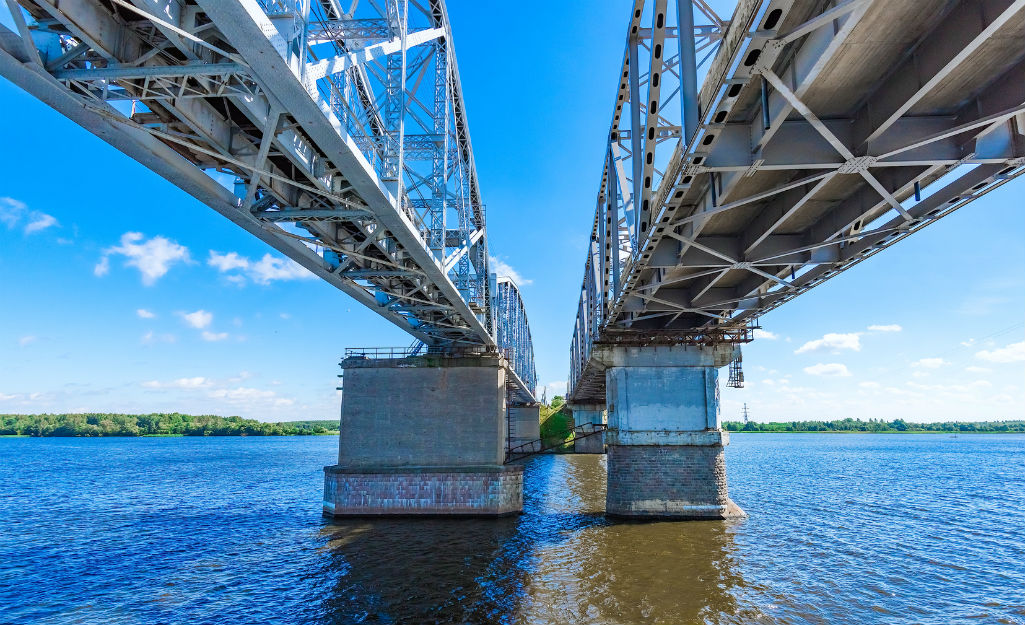
Cathodic protection is a method used to reduce steel oxidation through an electrochemical process. Cathodic protection is used to protect buried or submerged pipelines, bridges, and large steel structures from corrosion, breakdown, and rust when an electrolyte (like water with salt and minerals) is present. The electrolyte serves as a conduit for the electron flow from the anode to the cathode. In steel structures where no electrolyte is present (like a steel building), they are best protected by galvanizing (zinc coating) or simply painting.
For small steel structures, anode protection devices—like sacrificial anode tapes or ingots attached directly to the structure—can be employed. This is referred to as passive cathodic protection. For large or long steel structures that have a lot of surface area, like pipelines or bridges, passive cathodic protection systems are not enough. In these large steel structures, an active impressed current cathodic protection (ICCP) system is required.
An ICCP system typically consists of a 50-amp DC power source, an AC-powered transformer rectifier, and either an anode or an array of anodes (known as a “groundbed”) buried in the ground. ICCP works by driving an electric current to this remote anode and thereby supplying an excess amount of electrons to the cathode preventing corrosion to take place.
Determining Groundbed Location: 2 Geophysical Testing Methods
The groundbed resistivity is of utmost importance in ensuring proper cathodic protection. The maximum current output of the ICCP system is proportional to the amount of the surface area that needs to be protected. Therefore, it is important to locate the most conductive subsurface within the ICCP site. There are two geophysical tests you can use to determine resistivity and the best location for the groundbed: electrical resistivity imaging (ERI) or the ASTM G57 soil test.
ERI Vs. ASTM G57: Differences & Similarities
The ERI method, developed by Advanced Geosciences Inc. (AGI), scans the earth’s subsurface for its resistivity profile, similar to the way an MRI or a CT scan would image the subsurface of the human body. The ERI method uses the same measurements as the ASTM G57 soil test, but in significantly more automated locations to produce a more accurate and complete solution—with the same amount of field effort and similar cost. While the ASTM G57 test is a spot measurement, the ERI method creates a complete resistivity picture beneath the subsurface, despite geological heterogeneities .
The ASTM G57 test employs four electrodes, installed in a straight line, that must be manually moved to multiple locations throughout the test. The distance between each adjacent electrode is the same and can easily be 1,000 feet or more. This involves a lot of manual labor and walking back and forth to install the four electrodes for every measurement.
The ERI method is nearly identical to the ASTM G57 test, but is far less labor-intensive. The ERI system automatically scans the ground by reconfiguring the four electrodes used in each measurement hundreds of times in about five minutes. The result is hundreds (if not thousands) of ASTM G57 measurements instead of a single “spot” measurement. Additionally, the AGI multiconductor cable and Switch Box handle the electrode movements. This means to perform a test, you only have to deploy one cable and a large number of electrodes along the cable—which involves minimal walking in comparison.
When the ERI test is complete, it produces 2D images of the true resistivity distribution of the surveyed area by using modern finite element modeling software called EarthImager. The mathematics of these calculations are too large and complex for a human to do by hand, so the job is perfect for your laptop. Within seconds, the computer outputs a resistivity model of the Earth that satisfies your field measurements. This is not an approximation, like the apparent resistivity calculated from the ASTM G57 soil test. Instead, it represents the best-fitting resistivity structure of the subsurface possible.
Benefits Of ERI
- Reduced risk. Using the ERI method reduces risk associated with an improperly designed groundbed, which could result in costly redesigns.
- Energy savings. The electricity needed to operate an ICCP to cathodically protect a pipeline or bridge can add up—but ERI helps bring that cost down.
- Less groundbed cost. Reduce the complexity and cost of your groundbed design by locating the groundbed in an optimally conductive location.
Reducing Design Fault Risk In Groundbeds
The ICCP system requires the groundbed to have a maximum allowable ground resistance. So simply performing a single ASTM G57 soil test may not adequately portray variations in the subsurface resistivity. The 2D ERI method will show you the actual resistivity variations in the subsurface so you can locate the most conductive location within a designated area for the groundbed array. Alternatively, you may find that the ground conditions are inadequate to begin with and require a high-power ICCP system instead. A properly designed ICCP system will be able to output about 50 amps at 50 volts.
- From Ohm's Law: Volt = Current x Resistance
- 50 Volts = 50 Amps x Resistance
- Resistance = 50 Volts / 50 Amps = 1 Ohm
You can see that the ICCP requires the groundbed to achieve a one-ohm resistance with the ground. The resistivity of the subsurface is therefore very important to ensure proper protection and operation of the ICCP system.
Benefits Of Lower Groundbed Resistance
The long-term operating cost is dependant on the amount of electricity the system uses continuously. The electricity used is directly proportional to the grounding resistance of the groundbed anodes.
Let’s take a look at the equation for power. Ohm's law tells us that power equals current times voltage. So, if the ICCP system is capable of outputting a 50-amp maximum at a 50-volt maximum before running at full power, we will have:
- Power = 50 Amps x 50 Volts = 2,500 Watts
- The average residential kilowatt hour (kWh) cost in the USA is approximately $0.12 per kWh.
- Therefore, each ICCP system will cost roughly $7.20 per day or $2,628 per year to operate.
Choosing the optimum (e.g., the most conductive) location to install the underground groundbed will reduce costs proportionally. The power consumed to output the required 50 amps is dependent on the groundbed resistance. If the groundbed resistance is lowered because the ERI scan determines a better location with half the resistance, then the ICCP power source could operate at 25 volts to output the same 50 amps.
Here is the calculation:
Power = Current x Voltage
Power = 50 Amps x 25 Volts = 1,250 Watts
In summary, here are a few takeaways regarding the cost of using an ERI system:
- In this scenario, the system is using half the energy—so the cost of operation of the ICCP system is also halved.
- The amount of groundbed needed can also be halved since the lower contact resistance makes the system more efficient. The designer can now weigh the design cost and installation versus the long-term operating costs.
- A less complex system will translate to cost savings when the groundbed is installed.
Further Study
- Check out this excellent research paper from the National Institute of Standards and Technology (NIST) covering resistivity and cathodic protection: Soil Resistivity as Related to Underground Corrosion and Cathodic Protection, W. J. Schwerdtfeger
- Take a look at an AGI case history on how ERI technology was used in cathodic protection for a water pipeline.
Cathodic Protection Testing Setups
ASTM G57 Testing Equipment
- For moderate conditions and "a" spacings smaller than 500 feet, consider using the 50-watt MiniSting.
- For all possible conditions and "a" spacings several thousand feet, consider using the 200-watt SuperSting R1/IP/SP with Wi-Fi. This small unit packs a big punch. It can be controlled remotely (from the comfort of your lawn chair or the air-conditioned cabin of your work truck) via the included Android tablet. You can also share your measurement readings with the office right from the field.
ERI Equipment
- An ERI system consists of the SuperSting Wi-Fi resistivity instrument, 28-electrode SwitchBox, and 28-electrode take-out cable.
- Post-processing of the resistivity data is made simple by the AGI EarthImager 2D software.
Learn More About The ERI System
Advanced Geosciences Inc. (AGI) is the leading developer and manufacturer of geophysical imaging systems. Since 1989, we’ve been producing state-of-the-art electrical resistivity meters and products for induced polarization (IP) imaging like ERI. If you conduct your electrical resistivity survey using an AGI imaging system, our staff will be there to help you from start to finish with free technical support.
Ready to discuss your project?

